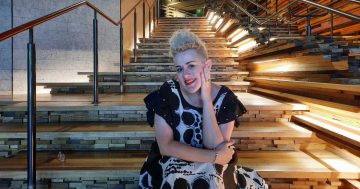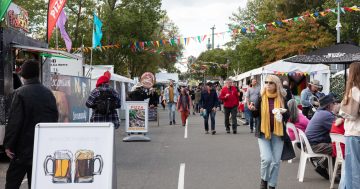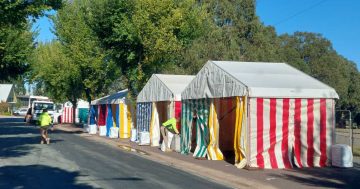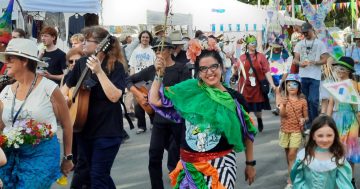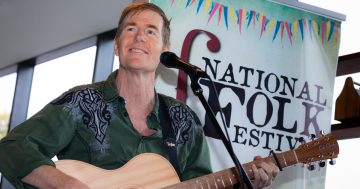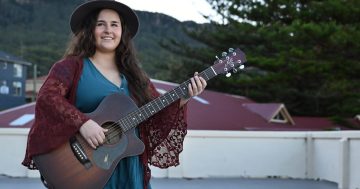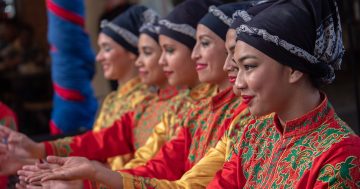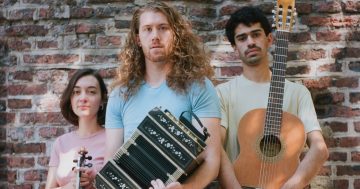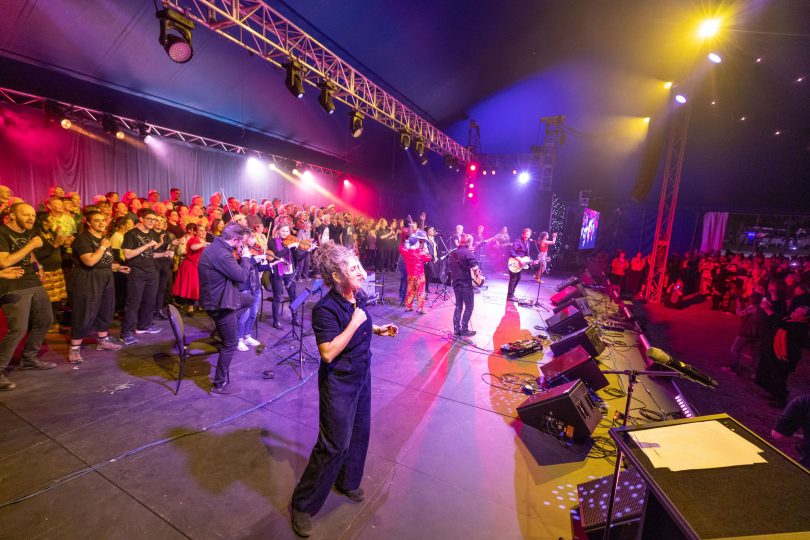
The National Folk Festival closing concert finale. Photo: Facebook/Ben Appleton.
Just pulling off a four-and-a-half-day event after two years of cancellations due to COVID-19 should be enough kudos to the National Folk Festival, but questions remain about whether its new direction struck the right chord.
The Festival’s return deserves to be celebrated and its organisers praised for making it happen.
Its board kept a lid on the complex internal tussle in the folk community over how the Festival could remain relevant and secure its future, but the eventual post-event review will need to confront these questions, including the perennial, ‘just what is folk?’
It’s hardly a new debate. Some still rue the day Dylan went electric.
Crowd numbers were down this year, which made for more comfortable dashes along EPIC’s streets to concerts and shorter queues for food, but that can be attributed to the ongoing effects of the still-in-progress pandemic.
There were fewer camping sites available and some regular festival-goers would have been nervous about booking and attending. Indeed, some artists had to cancel after contracting the virus.
Festival organisers made no secret of the fact that they intended to broaden the scope of the event to be less traditional and embrace much more than the Anglo-Celtic roots of Australian folk in a bid to attract more young people and get up to speed with the country’s multicultural profile.
This process has been underway for some time, but the hiring of someone outside the folk idiom to be the Festival’s Artistic Director ruffled some feathers and took it down a path to a wider menu of music.
Katie Noonan’s musical credentials are undeniable and anyone who has heard her sing will attest to that, but she may have leant too much on her own connections and applied a tick- the-diversity-box selection criteria to the event that diluted the Festival’s essential nature.
Without any international artists, the Festival became all-Australian, posing challenges for programmers needing to fill slots across the weekend.
That may have also contributed to the broad church of artists assembled.
Even headliner Kate Ceberano had to be convinced she was the right fit for the National, and while her performance with a terrific band was top-notch, is it what you’d expect at a ‘folk festival’?
Pop, rock, country, jazz, soul and world music was all on offer amid the more expected styles, and some will wonder who didn’t make the cut.

Charm of Finches: one of the young acts which augur well for the future. Photo: Ben Appleton.
There was still plenty of ‘folk’ to find but how broad and diverse can the Folk Festival be without simply becoming just another music event?
While the argument has been that the Festival’s audience is ageing and attention needed to be paid to attracting a younger set, many of the bigger names on the bill were hardly tuned to that audience.
But there were some brilliant young musicians and songwriting on show, which does auger well for the future of Australian folk music, if they stay with it and not head for the more lucrative pop scene.
As Eric Bogle once mused, that’s where all the good folk musicians end up.
Ironically, during the pandemic, one of the biggest names in the pop world, Taylor Swift, produced a couple of quality folk albums, showing that artists can move freely between genres.
Local string quartet Phoenix Collective also showed how to adapt to a setting with a diverse but fitting repertoire.
Perhaps there should be more promotion of younger artists instead of relying on name recognition.
The new main stage under the big top filled for the opening and closing concerts but was underutilised across the weekend. Some strange programming meant some venues were full while artists more at home in an intimate setting played to a sprinkling of people from the main stage.
There were format changes that may have disappointed some, such as switching the opening concert to the Friday night, and the cutting of the organised dances and campfire.
The ticket structure and prices may also have deterred some potential punters.
Previously, cheaper evening tickets were available for those who could not afford or not attend the all-day affair, and these were usually the younger roll-ups.
But this time it was all-day or nothing.
Sound problems plagued some concerts, including the closing finale which turned into a bit of muddle, but did not deter the generous crowd leaping to their feet to join in the mass singing of Blackfella/Whitefella, part of the very strong First Nations flavour at the Festival.
And for God’s sake, surely one can get a decent cup of tea at a folk festival!
But the much more important question of where to now for next year will involve honest evaluation and reflection on the Festival’s identity.
There is no doubt that folk is an ever-evolving idea, can embrace many forms and that the Festival cannot stand still. Getting the balance right is the trick.












